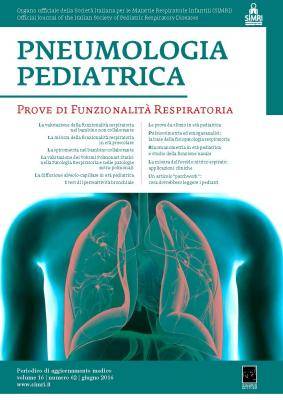Archivio > Vai alle uscite del 2016 > Vai aVolume 16, Numero 62 - Giugno 2016
- Prove di funzionalità respiratoria
La spirometria nel bambino collaborante

Riassunto: La spirometria fornisce al medico l’opportunità di accertare la normalità ed il grado di anomalia della funzione respiratoria. Oggi è disponibile una grande varietà di attrezzature computerizzate per l’esecuzione della spirometria in età pediatrica e, in particolare, gli apparecchi che si basano sulla misura del flusso mediante pneumotacografo o turbina sono di facile uso ambulatoriale. I principali parametri misurati sono: FVC, FEV1, PEF, FEF25-75 ed il rapporto FEV1/FVC %. Attraverso l’esame spirometrico è possibile identificare almeno 3 pattern di condizione respiratoria patologica:
1) la disfunzione ventilatoria di tipo ostruttivo;
2) la disfunzione ventilatoria di tipo restrittivo;
3) l’ostruzione al flusso di aria lungo le vie aeree centrali e periferiche.
Il test di broncodilatazione è una prova essenziale nella valutazione di reversibilità dell’ostruzione.
Spirometry provides the physician the opportunity to verify the normality and the degree of abnormality of the respiratory function. Today a wide variety of computer equipment for the execution of spirometry in children is available. In particular, devices based on the measurement of the flow through the pneumotachographor the turbine, are easy to use in outpatient clinic setting. The main parameters measured are: FVC, FEV1, PEF, FEF25-75 and FEV1/FVC % ratio. At least three patterns of
pathological respiratory condition can be identified through spirometry:
1) obstructive ventilatory dysfunction;
2) restrictive ventilatory dysfunction;
3) obstruction to airflow along the central and peripheral airways.
The bronchodilation test is essential in the evaluation of the bronchoreversibility.
Scarica il pdf dell'articolo






